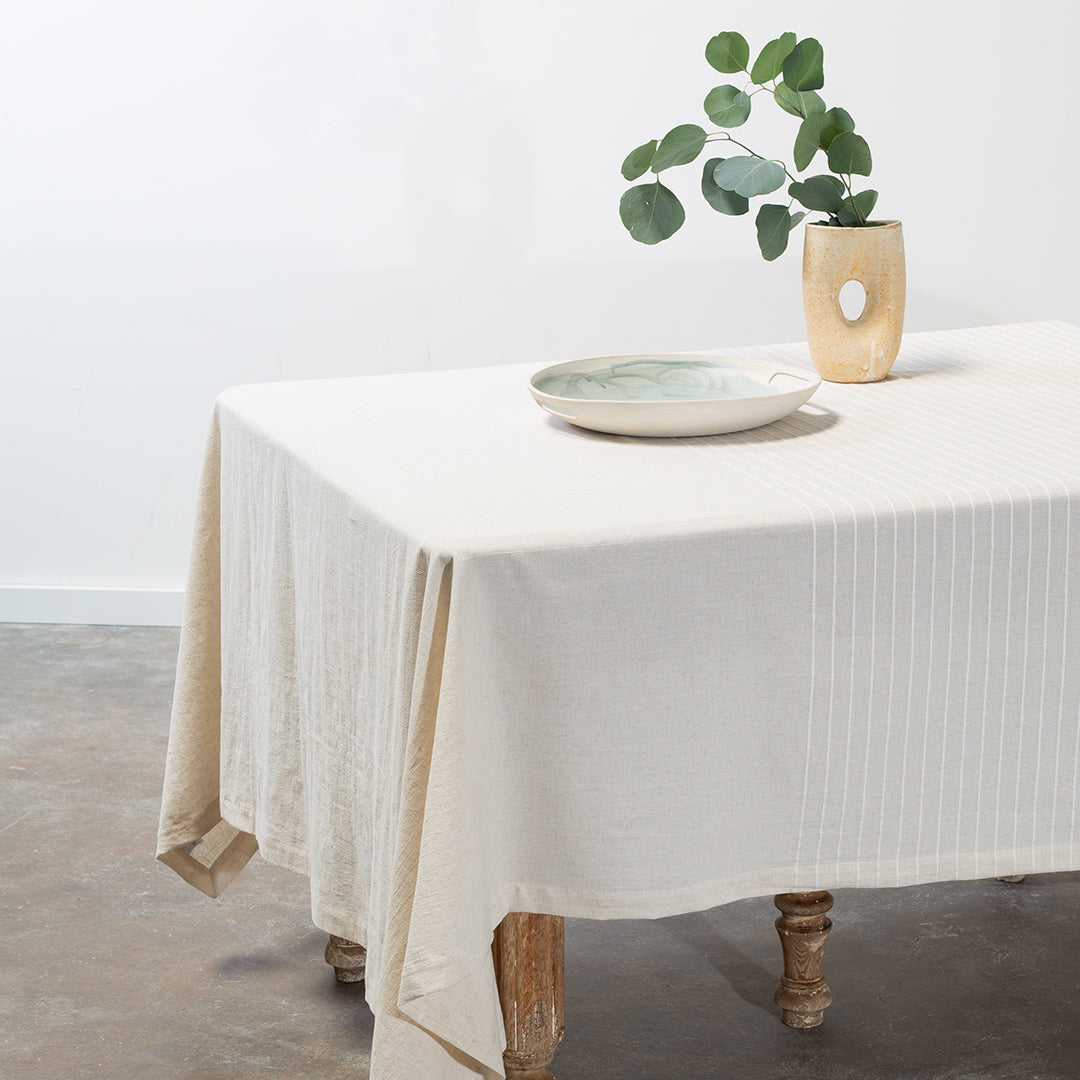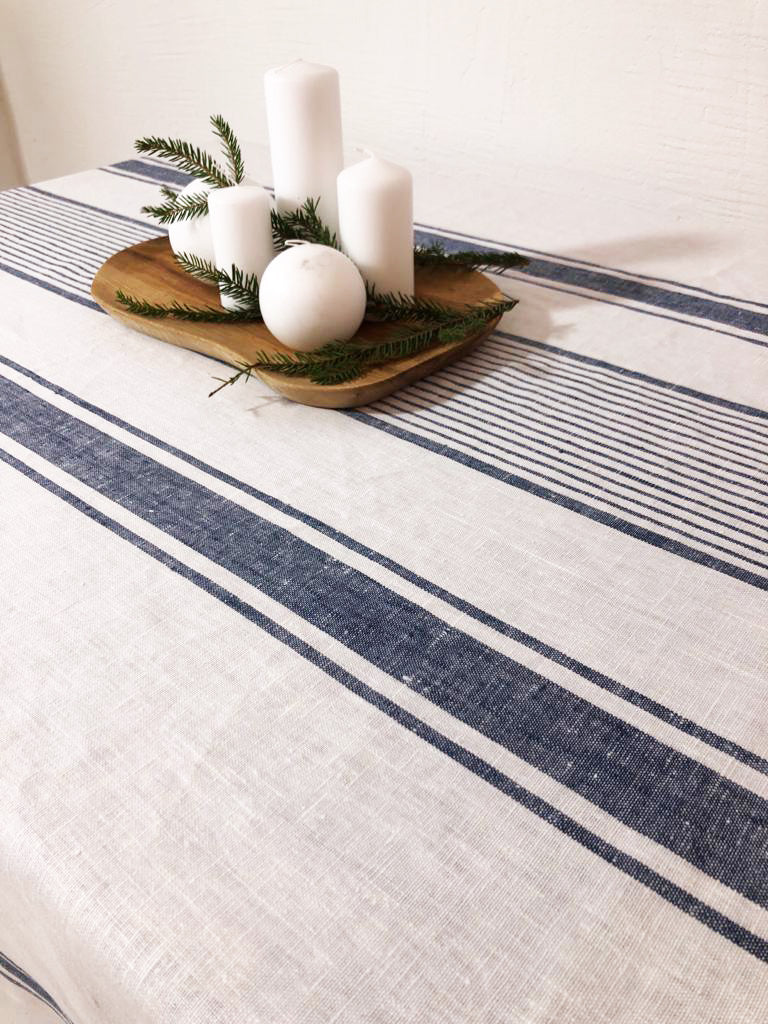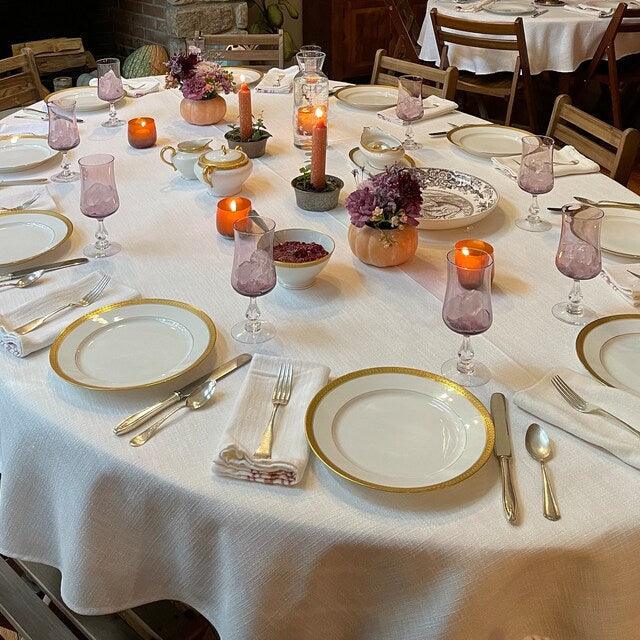Linen Fabric Advancements: Checking Out Modern Trends and Creative Applications in Layout and Fabric Industry
From lasting manufacturing approaches to cutting-edge weaving modern technologies, the development of bed linen is improving the landscape of the fabric market. As we delve into the worlds of innovative style applications and the introduction of bed linen blends and crossbreed materials, a new chapter unfolds in which bed linen's role in future textile advancements takes facility phase.
Sustainable Practices in Linen Manufacturing
Lasting methods in linen production have come to be significantly critical in the fabric industry's initiatives to lessen environmental influence and advertise ethical sourcing techniques. Linen, an all-natural fiber obtained from the flax plant, offers a series of benefits such as breathability, biodegradability, and longevity. Nonetheless, standard methods of bed linen production can include substantial water consumption, chemical use, and energy-intensive procedures.
To address these obstacles, many fabric manufacturers are embracing lasting practices throughout the bed linen manufacturing process. This consists of sourcing flax from organic ranches that avoid hazardous chemicals and chemicals, carrying out water-efficient retting strategies to extract fibers from the flax stalks, and using environment-friendly dyes and finishes. Furthermore, some companies are purchasing renewable resource sources to power their manufacturing facilities and reducing waste via recycling and upcycling campaigns.
Technological Developments in Linen Weaving
With the expanding focus on lasting techniques in linen manufacturing, the textile industry is now experiencing a rise in technical innovations specifically aimed at changing the art of linen weaving. These developments are reshaping the way linen materials are produced, providing enhanced performance, quality, and creativity in weaving strategies.
Among the vital technical innovations in linen weaving is the combination of digital looms. These advanced looms are geared up with software application that enables intricate and detailed layouts to be woven with accuracy. By digitizing the weaving procedure, suppliers can attain greater consistency and precision in their bed linen textiles.
In addition, advancements in yarn spinning innovation have allowed the production of finer and more long lasting bed linen threads - table cloths. This leads to softer and smoother bed linen textiles that preserve their quality even after several usages and cleans
Furthermore, the growth of green dyeing processes and coatings for linen fabrics is obtaining traction. These lasting techniques not only reduce the environmental effect however additionally satisfy the increasing customer demand for morally produced fabrics.
Creative Layout Applications for Linen
Ingenious imaginative techniques are increasingly shaping the creative layout applications for linen in the fabric sector. Linen's natural aesthetic appeal and capability to mix with other materials make it a favored option for developing distinct garments and devices that cater to the environmentally mindful consumer.
Furthermore, developers are explore bed linen in home style, utilizing its breathable and sturdy nature to craft stylish furnishings such as drapes, bed linens, and upholstery. The structure and drape of bed linen bring a sense of refinement and convenience to indoor spaces, adding a touch of elegance to modern homes.

Linen Blends and Crossbreed Fabrics

Crossbreed fabrics, on the other hand, take the concept of mixing a visit step even more by integrating added elements such as metal strings, recycled materials, or conductive fibers. These ingenious fabrics not just increase the layout opportunities but additionally present practical elements like conductivity, antimicrobial properties, or improved toughness. Crossbreed fabrics are progressively being used in various sectors, including style, interior decoration, and technical fabrics, where the need for multifunctional products gets on the increase.
Bed linen's Role in Future Fabric Innovations

In the realm of future fabric technologies, linen is expected to be a principal in the development of sophisticated useful textiles. Designers and scientists are discovering means to enhance linen's fundamental high qualities via technical advancements, such as incorporating clever textiles, nanotechnology, and efficiency finishes. These technologies aim to boost linen's efficiency characteristics, making it ideal for a wider series of applications, from activewear to protective clothes.
Moreover, the mix of bed linen with various other natural or synthetic fibers opens up endless opportunities for developing unique textiles with distinct residential or commercial properties and functionalities. By leveraging linen's qualities and checking out ingenious blends, the fabric industry is positioned to present interesting advancements that deal with advancing customer requirements and sustainability requirements.
Verdict
To conclude, the exploration of sustainable methods, technical innovations, innovative design applications, linen blends, and its function in future textile innovations highlight the continual development of linen textile in the contemporary design and fabric industry. With an emphasis click to investigate on technology and creativity, the convenience and green nature of linen make it a valuable product for developers and makers alike, leading the way for further growths and developments in the area of textiles.
As we delve right into find more the realms of creative design applications and the development of linen blends and hybrid materials, a new chapter unravels in which linen's function in future fabric developments takes facility stage.
Checking out the combination of linen with various other fabrics has led to the development of innovative blends and crossbreed textiles in the modern fabric industry. Linen blends supply a distinct mix of the characteristics of linen with those of other fibers, resulting in fabrics that have enhanced residential properties such as raised longevity, enhanced draping, and minimized wrinkling.The advancement of linen blends and hybrid materials has actually established the phase for Linen to play a critical function in driving future textile developments.In the world of future fabric innovations, linen is anticipated to be a crucial player in the advancement of sophisticated functional textiles.